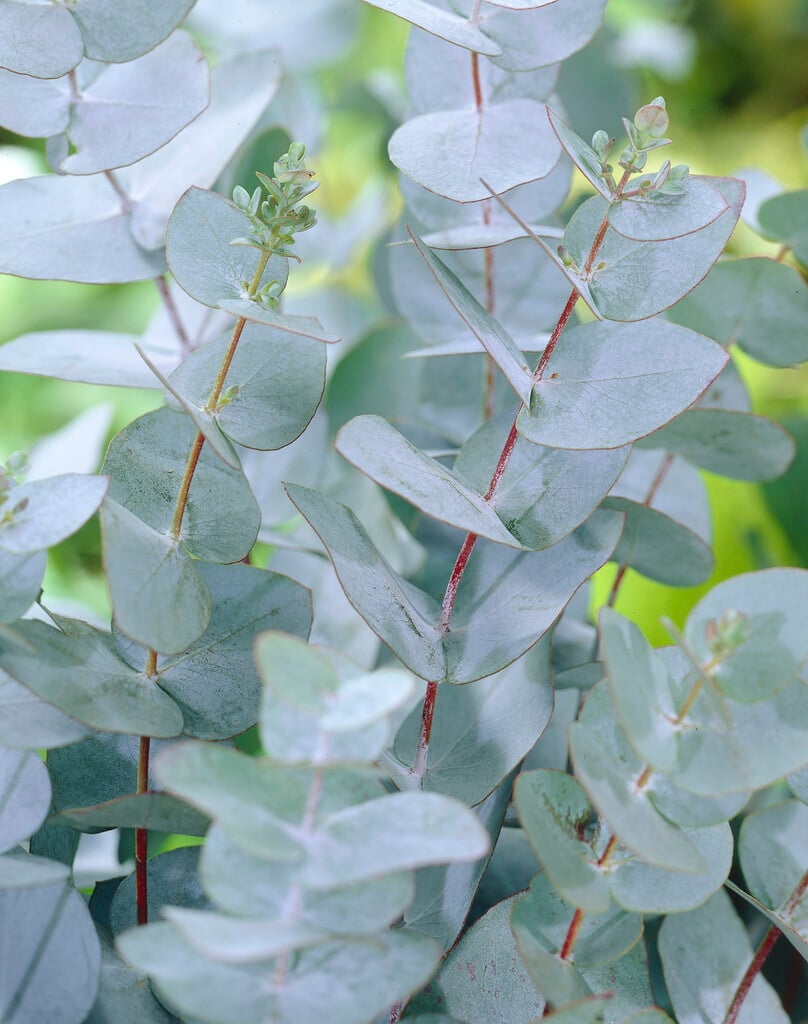Eucalyptus pulverulenta 'Baby Blue'
silver-leaved mountain gum 'Baby Blue'
A slow-growing, compact evergreen tree, growing to 3-4m (10-13ft) in height, making it more suitable to grow in smaller gardens, than many other eucalypts. Both the juvenile and adult foliage is round and an intense silver blue. It is one of the most widely used eucalypts in flower arranging. The foliage and stems have a very strong eucalyptus aroma. Flowers are white and appear in winter and spring.
Size
Ultimate height
2.5–4 metresTime to ultimate height
10–20 yearsUltimate spread
1.5–2.5 metresGrowing conditions
Moisture
Moist but well–drained, Well–drainedpH
Acid, Alkaline, NeutralColour & scent
| Stem | Flower | Foliage | Fruit | |
| Spring | White | Grey Silver Blue | ||
|---|---|---|---|---|
| Summer | Grey Silver Blue | |||
| Autumn | Grey Silver Blue | |||
| Winter | White | Grey Silver Blue |
Position
- Full sun
Aspect
South–facing or West–facing or East–facing
Exposure
Sheltered Hardiness
H5Botanical details
- Family
- Myrtaceae
- Native to GB / Ireland
- No
- Foliage
- Evergreen
- Habit
- Bushy
- Genus
Eucalyptus are evergreen trees or large shrubs, often fast-growing, some with attractive bark, most with aromatic foliage, and clusters of small, white, yellow or red flowers
- Name status
Accepted
How to grow
Cultivation
Grows best in full sun and a mildly acidic to neutral soil that is moist but well-drained, but will also tolerate mildly alkaline soil. Able to withstand cold temperatures when mature, but shelter from cold, drying winds especially when young. See eucalyptus cultivation
Propagation
Propagate by seed at 13-18°C in spring and summer
Suggested planting locations and garden types
- Architectural
- City and courtyard gardens
- Cottage and informal garden
- Mediterranean climate plants
- Patio and container plants
- Flower borders and beds
Pruning
Pruning group 1 or, for best juvenile foliage, pruning group 7 For more information see Eucalyptus: pruning
Pests
May be susceptible to eucalyptus gall wasp and eucalyptus sucker
Diseases
May be susceptible to silver leaf, oedema and honey fungus
Get involved
The Royal Horticultural Society is the UK’s leading gardening charity. We aim to enrich everyone’s life through plants, and make the UK a greener and more beautiful place.

